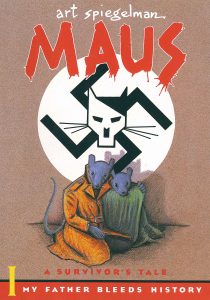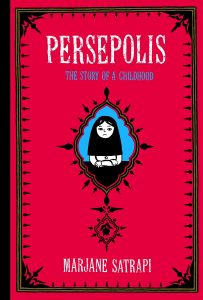The novel Disgrace, written by J.M. Coetzee was published on July 1st, 1999. It narrates the discomforting story of a South African professor, David Lurie who has been divorced twice and commits several sexual acts which are rather inappropriate. The social context of this novel takes place in post-apartheid South Africa, which plays a crucial role in understanding the underlying nature of this novel. Coetzee has recurring themes of violence, denial, and vulnerability which are all depicted through the unfolding of events in Disgrace.
Personally, I didn’t quite enjoy reading the novel because it was discomforting in the way these themes were portrayed, the social context during post-apartheid where there was a lot of racial tension between the majority and minority. They were racially segregated in almost all aspects of life (political, economic and social discrimination against non-whites by the whites), they were segregated into four categories; Afrikaners (the White), the Black (Non-whites), the Colored (people of mixed race) and Indians. It’s important to note that apartheid was specifically meant to protect the domination of the White South Africans (Afrikaners) over non-whites. The Afrikaners believed that South Africa was their “God-given” homeland and that the white race was superior. Despite all the violence, a series of bad choices and racial segregation, I thought that the book was quite compelling and an interesting read as there were many hidden themes which were implied in Disgrace. In relation to the bigger picture of the Global Citizens stream, reading this novel was extremely relevant because we explored the relationships between literature, the self, the nation and the world around us. Disgrace is also a novel which conveys experiences of historical events, in this case, post-Apartheid in South Africa. Hence, it has allowed us as students to question how memory is portrayed and viewed both through a more specific lens versus a more generalized view.
When reading Disgrace, the theme which particularly interested me was “vulnerability” and how it was portrayed through multiple characters including; David Lurie, Lucy Lurie, and Melanie Isaacs. The theme of “vulnerability” is depicted in different forms throughout the novel as a way to accentuate the development of characters and how their experiences impact their thought processes and personality. An example of Melanie Isaacs showing vulnerability is when she spends time with her professors, David Lurie. She is somewhat characterized as timid and innocent when David Lurie sexually assaults her by raping her. When reading the first sex scene between Melanie and David, as a reader, I felt that David was somewhat pressuring her into having non-consensual sex and although Melanie didn’t do anything to prevent David’s actions, it’s implied that she was vulnerable towards David as she didn’t show any sign of enjoyment. Even though Melanie’s character is quite ambiguous as we are never given any details about her intentions towards David, the question begs to differ whether her vulnerability was used to deceive David. Why you might ask? Well, not long after their first sexual encounter she starts to dodge David’s lectures and skips her rehearsals. She then shows up at David’s apartment unannounced crying hysterically (another example of her vulnerability) about a matter that is never further discussed or explained. She also skips a test for David’s class and as David calls her out for it indicating to her that she had to make time to write the exam, she refuses and this implies that she thought because David has developed a sexual interest towards her, she would be able to get away with not completing her duties as a student. These moments of vulnerability which Melanie Isaacs has portrayed causes us as readers to identify changes in her character as we see that there is a side to her we don’t know about or is hidden to us. Her intentions are never explicitly stated and characterized to be quite secretive towards David and the readers.
On the other hand, Lucy Lurie deals with being vulnerable in a different manner. Although we know that she has been through a traumatic experience of rape when there was a home invasion by three men, she dealt with the rape by keeping it to herself and letting it somewhat consume her. In the social context of post-Apartheid, the racial tensions were evident and has a linkage to Lucy Lurie’s traumatic experience. After the incident, she explicitly informed David to only tell his side of the story and not her side of the story because she would take care of it herself. Lucy was showing symptoms of post-traumatic stress as she would not sleep in the room that the incident took place, she would avoid talking about the incident even though David tried to address it a couple of times as he thought that she should report it to the police, and at the time where she finally explicitly says she has been raped, she has accepted the truth and we see her own up to her trauma after the time she has been in denial of what happened. I wouldn’t say she was in complete denial, but she refused to talk about it and instead of reporting it to the police, she kept quiet. As Lucy’s character shifts throughout the book, we see that in the moments where she is vulnerable, she has lost a sense of herself because she was suffering in the shadow of her attack. However, she regains her spirit and confidence towards the end of Disgrace where we see that she is able to make choices and decisions with a clearer mind.
Lastly, David Lurie’s portrayal of vulnerability is contrasted with his personality because he is characterized as egoistic, self-absorbed and struggles to understand or feel empathy towards others. His vulnerability is never clearly explicit but is especially prominent when he and his daughter, Lucy are attacked in her home. David shows signs of vulnerability when he is hit across the head, dragged across the kitchen floor and locked in the bathroom. When he regains consciousness, he calls Lucy’s name and tries to break free. We see that he struggles and feels helpless and vulnerable as his father instincts kick in and all he wants to do is help Lucy to see if she was alright. During this moment, the readers are given a different perspective on David, he is genuinely worried and vulnerable which is the opposite of how he was portrayed previously in the novel. I think what made him most vulnerable was the fact that he couldn’t do anything to help Lucy and at that point, I’d like to believe that he had a moment of realization of all his past actions and experiences with Soraya, Melanie and possibly wondered if they felt this type of vulnerability and the feeling of not being able to escape. David’s vulnerability and his experience has created a sense of irony where even though he is not willing to confess about his wrongdoings in the past, he builds a wall against others to ensure that he is impenetrable. However, now that the tables have turned not directly on him, he somewhat struggles with his current situation with Lucy’s traumatic experience and his walls come tumbling down. He feels like now Lucy replicates the same response he had towards the school board attempting to get him to confess towards the sexual assault of Melanie Isaacs, but he didn’t want to accept them, he was willing to “accept the charges”. In this case, David is trying to uncover what really happened to Lucy while Lucy is defensive about it and unwilling to talk about her experience and her truth. The audience sees a development of character in David as throughout Disgrace he constantly struggles to place himself in the shoes of others or be empathetic towards them, however towards the end, he learns to let go of this defensive bubble he has created by being more accepting and open.
Overall, the theme of vulnerability has been presented and expressed in a variety of ways and has different effects depending on the character and their experiences. This can be applied to my sociology class because we learned about the effects of racial segregation and marginalization and what kind of impacts that may have on the lives of the target community. We learned about the Thomas Theorem which indicates that if we believe that our racial issues are real, then it means it is real in its consequences (based on our experiences in society). This relates to Disgrace because even though the social context of post-Apartheid was not entirely clear or referred to very often, the violence and traumatic experiences which are evident in this book are a result of the racial segregation and apartness of communities, this then evokes hatred towards another which can be expressed through violent acts.

